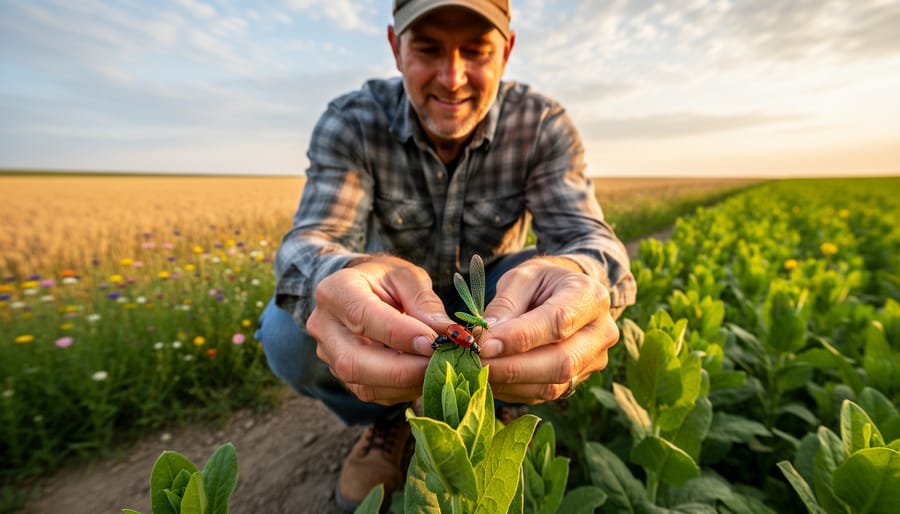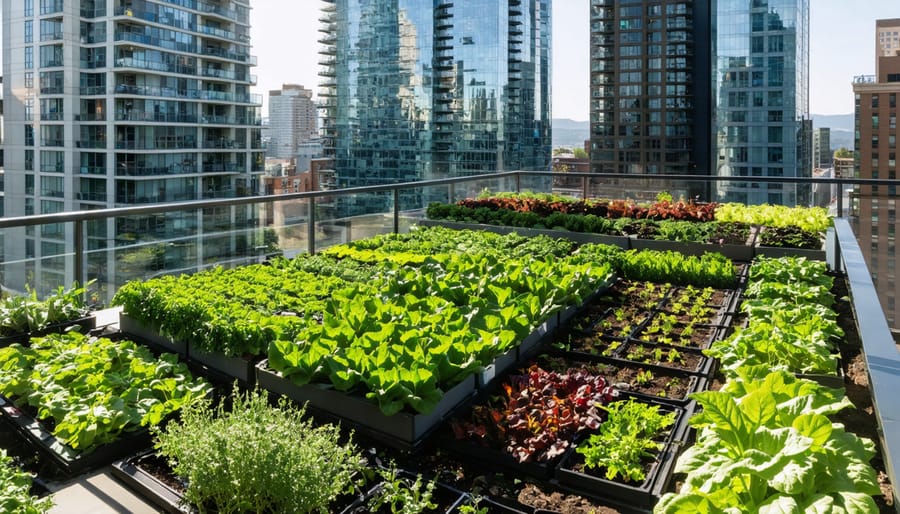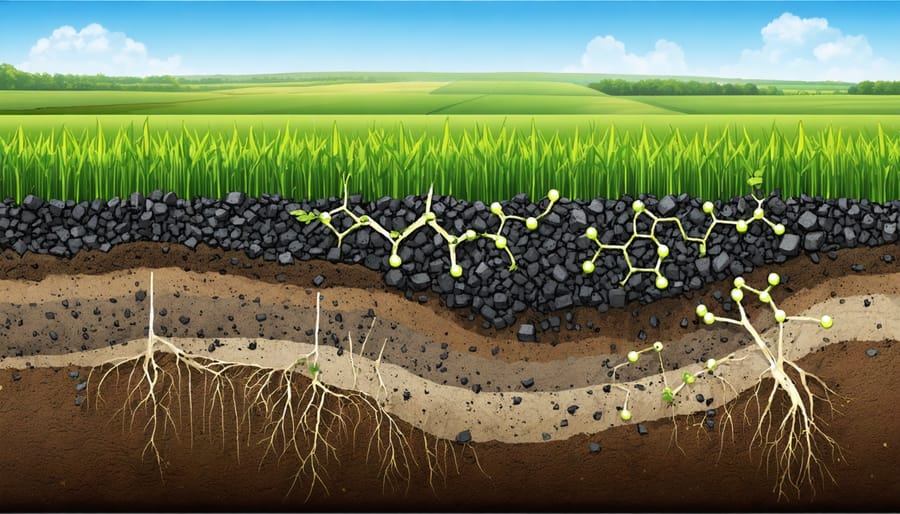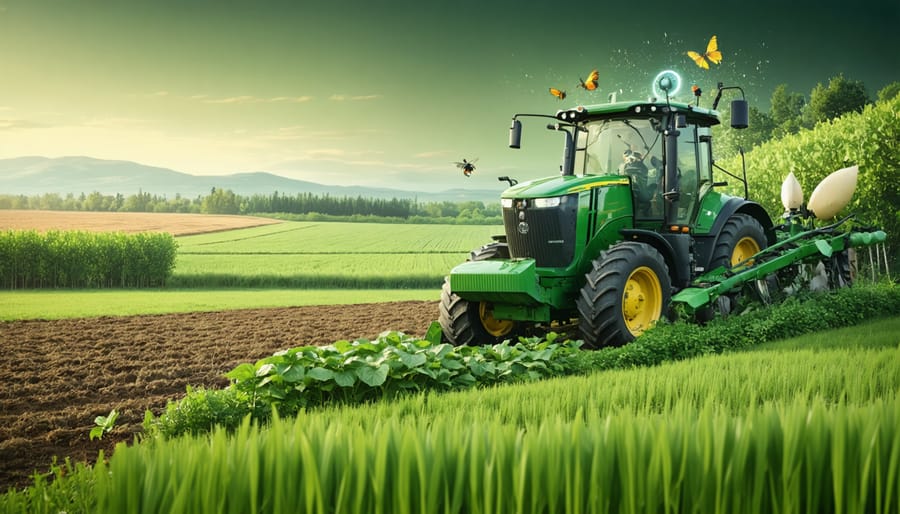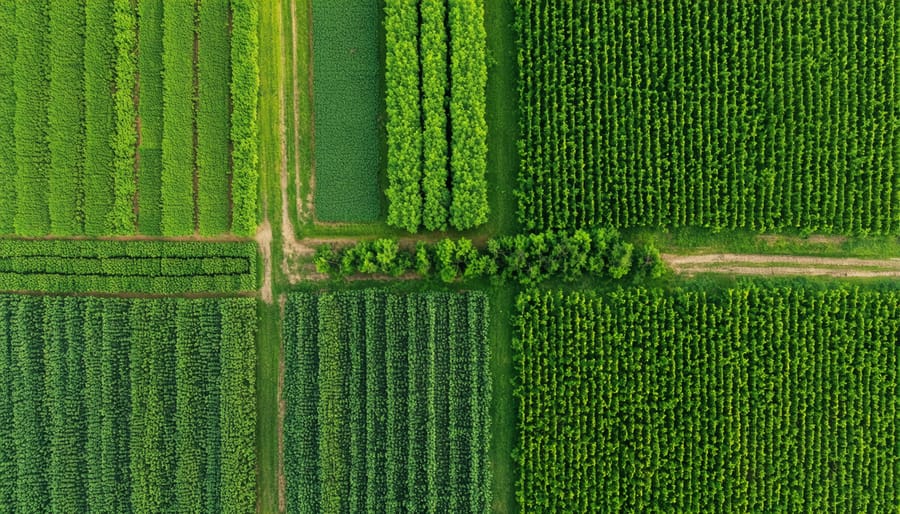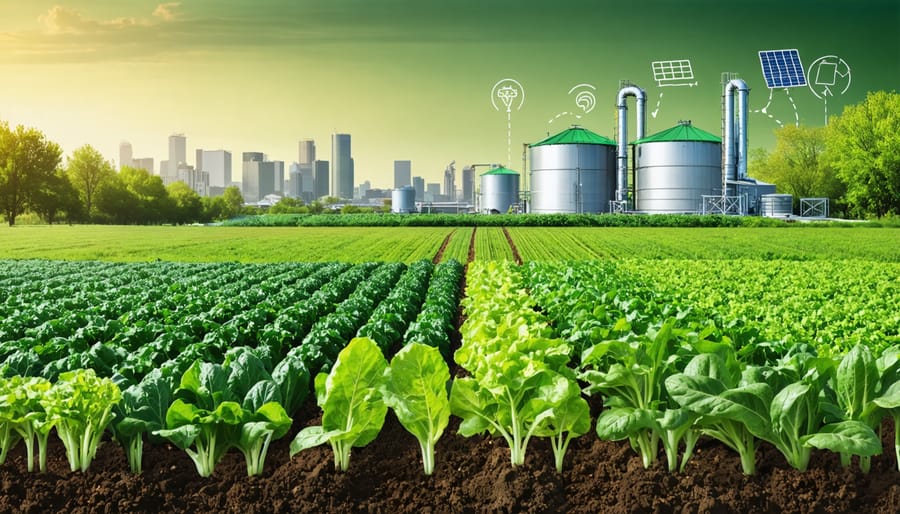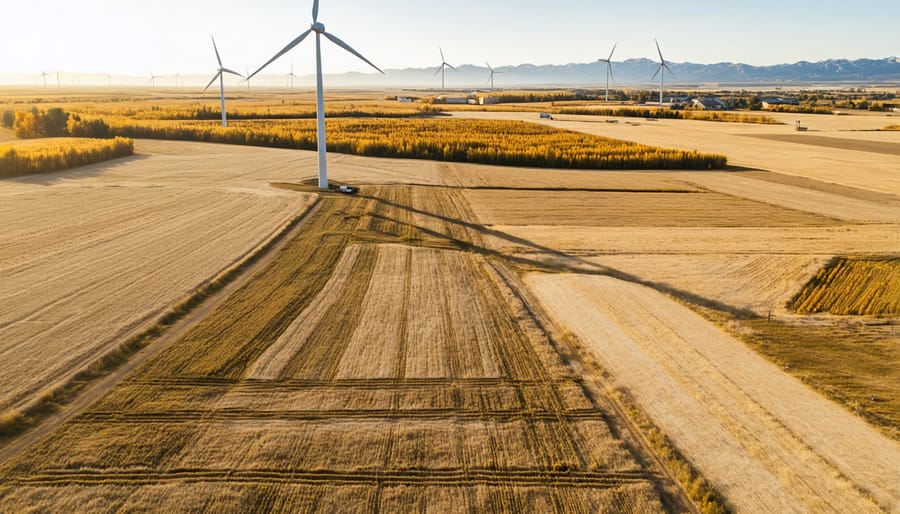Circular farming transforms traditional agricultural waste into valuable resources, creating a self-sustaining ecosystem where nothing goes to waste. On Alberta’s prairies, innovative farmers are revolutionizing food production by integrating livestock, crops, and natural systems in a continuous cycle of productivity. By closing nutrient loops and minimizing external inputs, these operations reduce costs by up to 40% while building soil health and increasing biodiversity. This regenerative approach isn’t just about sustainability—it’s about profitability and resilience in an era of rising input costs and climate uncertainty.
From cattle manure powering greenhouses through biogas generation to crop residues feeding livestock, circular farming systems are proving their worth across Western Canada. Local success stories, like the Davidson Family Farm in Red Deer County, demonstrate how integrating multiple enterprises—from grass-fed beef to winter greenhouse production—can create year-round income streams while regenerating the land. This practical, profit-driven approach to agriculture is helping Canadian farmers build resilient operations that thrive in harmony with nature while meeting growing consumer demand for sustainably produced food.
The Circular Economy Revolution in Alberta’s Farms
From Linear to Circular: Rethinking Farm Operations
Traditional farming often follows a linear “take-make-dispose” model, where resources flow in one direction, leading to waste and environmental strain. However, the shift toward a circular economy in agriculture is transforming how Canadian farmers approach their operations.
In circular farming, waste becomes a valuable resource. Crop residues feed livestock, manure enriches soil, and by-products create new revenue streams. This closed-loop system mirrors natural ecosystems, where nothing goes to waste. For Alberta farmers, this means reimagining farm waste as opportunities: converting spoiled hay into mushroom substrate, using livestock manure for biogas production, or transforming crop residues into value-added products.
The transition doesn’t happen overnight. Many Alberta farmers start small, perhaps by implementing better composting systems or rotating crops more effectively. What’s crucial is understanding that every farm operation can find its own path to circularity. Success comes from identifying existing resource loops and gradually closing them, creating a more resilient and sustainable farming system that benefits both the environment and the bottom line.
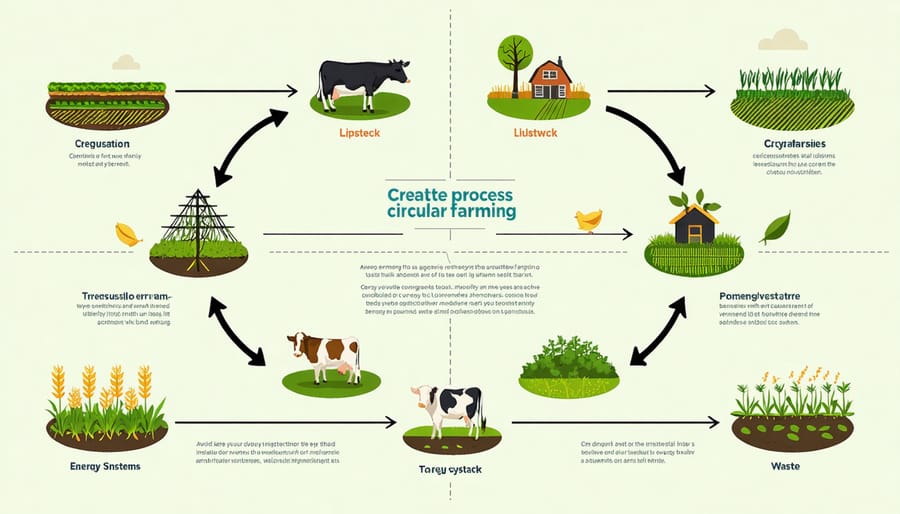
Alberta’s Unique Circular Farming Opportunities
Alberta’s unique landscape and climate create distinct opportunities for circular farming practices. Our long summer days and cool nights provide ideal conditions for diverse crop rotation, while the province’s extensive cattle industry offers natural synergies for integrating livestock with crop production.
Local farmers have found success by partnering with nearby operations to create closed-loop systems. For instance, grain producers in central Alberta work with livestock operations to exchange feed grain for nutrient-rich manure, reducing both waste and input costs. The province’s strong pulse crop sector also contributes to soil health through nitrogen fixation, creating natural fertilization cycles.
However, Alberta farmers face specific challenges, including variable precipitation patterns and a shorter growing season. Many have adapted by implementing innovative water management systems and selecting cold-hardy crop varieties. The province’s extensive agricultural research network, including facilities in Lethbridge and Lacombe, continues to develop region-specific solutions for circular farming implementation.
The strong community ties among Alberta farmers have fostered knowledge-sharing networks, helping new adopters of circular farming practices learn from experienced producers. Local agricultural societies regularly host workshops and field days, making the transition to circular farming more accessible for interested producers.
Practical Implementation of Circular Farming Methods
Waste-to-Resource Conversion Systems
Modern circular farming practices excel at reducing agricultural waste through innovative conversion systems. Here in Alberta, farmers are implementing creative solutions to transform farm waste into valuable resources, creating additional revenue streams while supporting environmental sustainability.
Composting remains a cornerstone of waste conversion, with many operations using advanced windrow systems to transform crop residues and livestock manure into nutrient-rich soil amendments. These systems can process up to 500 tonnes of organic matter annually, producing high-quality compost worth $40-60 per tonne.
Biogas digesters are gaining popularity, particularly on dairy and hog farms. These systems convert manure and organic waste into methane for power generation and high-quality fertilizer. A mid-sized operation processing 100 cattle worth of manure can generate enough electricity to power 40-50 homes while producing valuable bio-fertilizer as a by-product.
Innovative farmers are also implementing vermiculture systems, using earthworms to convert organic waste into vermicompost. This premium product can fetch up to $200 per tonne and is in high demand among organic growers and greenhouse operations.
Local success stories include the Sundre Biogas Facility, which partners with nearby farms to process agricultural waste into renewable natural gas, demonstrating how community-scale projects can benefit multiple operations while supporting regional sustainability goals.
Water Recycling and Conservation
In circular farming, effective water management isn’t just about conservation—it’s about creating a closed-loop system where every drop counts. Alberta farmers are increasingly adopting innovative water conservation techniques that maximize efficiency while maintaining soil health and crop productivity.
Key strategies include capturing and storing rainwater in retention ponds, implementing precision irrigation systems, and utilizing soil moisture sensors to optimize watering schedules. Many Alberta farms are now incorporating greywater systems that treat and reuse water from washing facilities for irrigation, reducing freshwater consumption by up to 40%.
Cover cropping and mulching play crucial roles in water conservation by improving soil structure and reducing evaporation. These practices help retain moisture in the soil profile, particularly valuable during Alberta’s dry spells. Local farmer Dan Thompson from Lacombe County reports saving approximately 2.5 million litres of water annually through these methods.
Advanced filtration systems enable the safe recycling of nutrient-rich water from aquaculture and livestock operations for crop irrigation. This integration creates a beneficial cycle where waste becomes a resource. Controlled environment agriculture, including greenhouses and vertical farming systems, typically uses 90% less water than traditional field cultivation while maintaining year-round production.
Remember to monitor water quality regularly and maintain proper documentation of usage patterns to optimize your system’s efficiency over time.
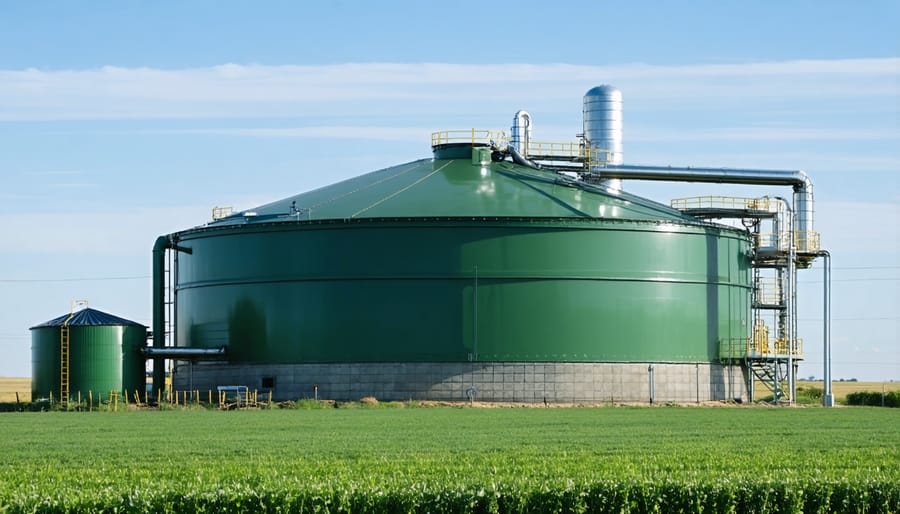
Energy Loop Integration
Creating closed energy loops on your farm isn’t just environmentally sound – it’s a smart business decision that can significantly reduce operating costs. Here in Alberta, farmers are finding innovative ways to capture and reuse energy throughout their operations.
A key strategy is integrating biogas systems that convert organic waste into usable energy. For example, the Lethbridge Biogas facility partners with local dairy farms to transform manure into electricity, powering both farm operations and feeding excess back into the grid. On a smaller scale, farmers are installing methane digesters to heat greenhouses and farm buildings during our cold winters.
Solar panels are becoming increasingly common on Alberta farms, with many operations using them to power irrigation systems and barn ventilation. Some farmers are taking it further by incorporating ground-source heat pumps to maintain consistent temperatures in livestock buildings and greenhouses year-round.
Wind energy also plays a crucial role, particularly in southern Alberta where consistent wind patterns make turbines a reliable energy source. Smart farmers are positioning windbreaks to not only protect crops but also to harness wind power for small-scale electricity generation.
The key to successful energy integration is starting small and scaling up gradually. Consider beginning with simple solutions like solar-powered water pumps or passive solar greenhouse designs, then expanding as you see results.
Success Stories: Alberta Farmers Leading the Way
The Turner Valley Transformation
Located just 60 kilometers southwest of Calgary, the Turner Valley Farm has become a shining example of successful organic farming in Alberta through its innovative circular farming practices. Sarah and James McKenzie transformed their traditional 160-hectare operation into a thriving ecosystem that demonstrates the powerful potential of circular agriculture.
The McKenzies began their transformation in 2018 by integrating a diverse rotation of crops including barley, peas, and heritage wheat varieties. They established a closed-loop system where their 40-head cattle herd grazes on cover crops, while their manure naturally fertilizes the soil. The farm’s innovative composting system processes all organic waste, producing approximately 200 tonnes of nutrient-rich compost annually.
A key feature of their success has been the implementation of precision irrigation systems that reduce water usage by 40% compared to traditional methods. The farm also incorporates solar panels that generate 75% of their energy needs, demonstrating how renewable energy can support agricultural operations.
The results speak for themselves: soil organic matter has increased from 2% to 4.5% in just four years, crop yields have stabilized despite challenging weather conditions, and operating costs have decreased by 30%. The McKenzies now host regular workshops for local farmers, sharing their experiences and helping others transition to circular farming methods.
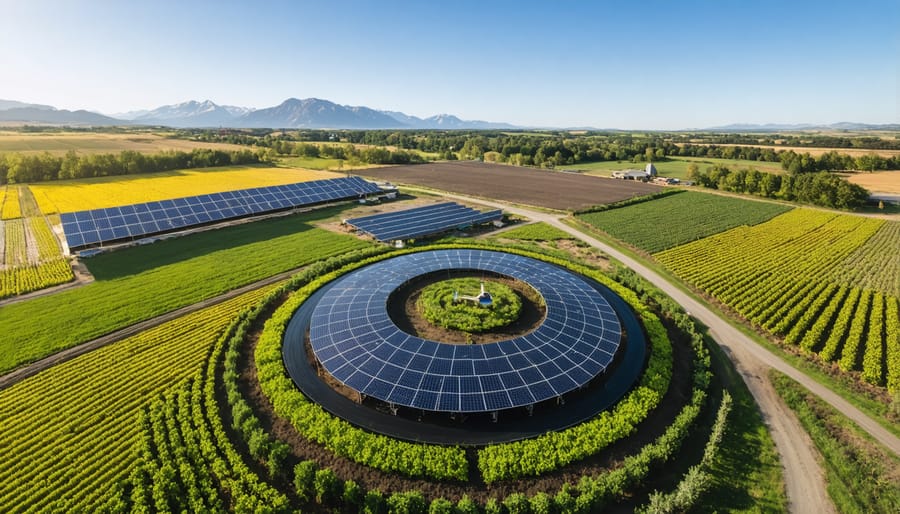
Community Impact and Economic Benefits
Circular farming creates significant ripple effects throughout local communities, fostering both social and economic growth. In Alberta, farms implementing circular practices report an average 15-20% reduction in input costs, primarily through decreased reliance on commercial fertilizers and better resource management.
The economic benefits extend beyond individual farms. Local processing facilities and markets develop to handle diverse farm outputs, creating new job opportunities in rural areas. For instance, the Lethbridge Food Hub initiative has created 27 new positions while connecting circular farms with local restaurants and food processors.
Communities benefit from improved food security and environmental quality. Circular farms typically produce a wider variety of crops and livestock products, making fresh, local food more accessible. These practices also help maintain soil health and water quality, protecting valuable community resources for future generations.
The collaborative nature of circular farming strengthens rural social networks. Farmers share equipment, knowledge, and resources, leading to stronger community bonds. The Southern Alberta Regenerative Farmers Network, for example, has grown from 12 to 75 members in three years, demonstrating the growing interest in collective learning and support.
From an economic perspective, circular farms often see increased profitability through diversified income streams and reduced vulnerability to market fluctuations. This financial stability contributes to the long-term viability of rural communities and helps attract younger generations to farming.
Getting Started with Circular Farming
First Steps and Quick Wins
Starting your circular farming journey doesn’t require an immediate complete farm overhaul. Begin with manageable steps that can yield quick results while building confidence in the system. A practical first step is conducting a waste audit of your farm operations to identify potential circular opportunities.
Consider implementing a basic composting system for crop residues and organic waste. This can provide immediate benefits by reducing waste disposal costs while creating valuable soil amendments. Many Alberta farmers have found success by first focusing on a single field or crop to test circular principles.
Start collecting rainwater for irrigation and exploring cover crop options suited to our climate. Legumes like field peas work well in our region and help build soil health while providing additional income streams. Connect with local livestock farmers to explore partnerships for manure exchange or grazing opportunities.
The Alberta Farm Sustainability Extension Working Group offers free consultations to help you identify the most promising circular opportunities for your specific operation. Remember, even small changes like reducing packaging waste or implementing precision farming techniques can lead to significant improvements over time.
Available Support and Resources
Alberta farmers interested in transitioning to circular farming practices can access numerous support networks and financial resources. The Canadian Agricultural Partnership (CAP) offers grants up to $75,000 for sustainable agriculture initiatives, including circular farming projects. Local agricultural societies throughout Alberta provide mentorship programs and networking opportunities for farmers exploring sustainable practices.
The Alberta Farm Sustainability Extension Working Group (AFSEWG) offers free consultations and workshops specifically focused on circular farming implementation. Their expert advisors can help develop customized plans for your farm’s transition. Additionally, Olds College’s Smart Farm program provides hands-on training and research opportunities in sustainable agricultural practices.
Financial support is also available through Farm Credit Canada’s sustainability-focused lending programs, offering competitive rates for eco-friendly farm improvements. The Environmental Farm Plan (EFP) program provides both technical assistance and potential funding for implementing circular farming practices.
For ongoing support, join the Alberta Circular Agriculture Network, which connects farmers practicing or transitioning to circular methods. Monthly meetups and annual conferences provide valuable opportunities to learn from experienced practitioners and share challenges and successes with fellow farmers.
Circular farming represents a pivotal shift in Canadian agriculture, offering a sustainable path forward that benefits both farmers and the environment. Throughout this exploration, we’ve seen how integrating livestock, crops, and natural systems creates a robust agricultural ecosystem that reduces waste, optimizes resource use, and builds soil health.
The success stories from Alberta’s farming community demonstrate that circular farming isn’t just an idealistic concept – it’s a practical and profitable approach to modern agriculture. From reduced input costs to improved soil fertility and increased crop yields, the benefits are tangible and significant.
As we face growing environmental challenges and market pressures, the transition to circular farming practices becomes increasingly important. Starting small with manageable changes, such as implementing cover crops or integrating livestock rotation, can lead to substantial long-term benefits for your operation.
We encourage you to connect with local agricultural extension services and fellow farmers who have already begun their circular farming journey. The Alberta farming community is known for its collaborative spirit, and there’s no better time than now to become part of this sustainable agricultural movement.
Remember, every step toward circular farming practices contributes to a more resilient and sustainable agricultural future for Alberta and Canada as a whole. Whether you’re ready to completely transform your operation or simply interested in incorporating select principles, the path to circular farming is open to all.


